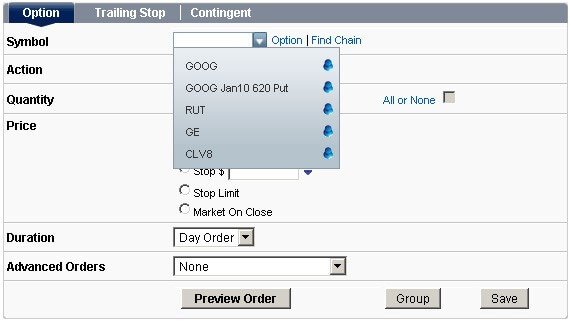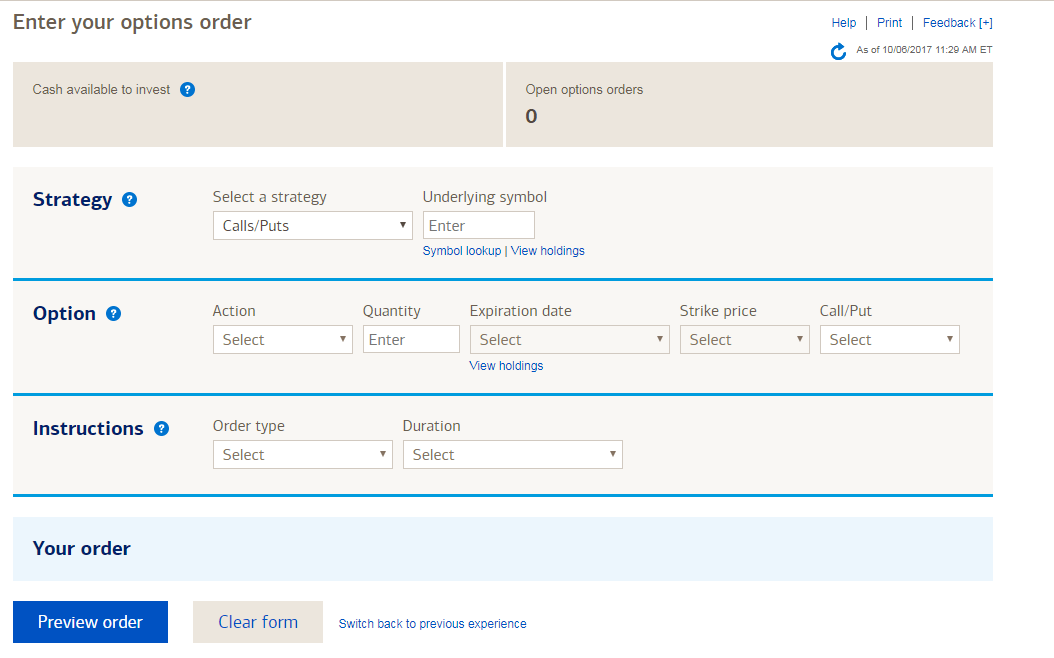Last week, we talked about the basics of options - what they are, why they exist, how to understand them, and why every investor can pull down extraordinary profits from using them.
Now I'm going to walk you through the basics of starting to trade.
You see, there are three very simple steps you need to take before you can start trading for steady monthly income, asset protection, or my personal favorite, fast triple- and quadruple-digit windfall gains.
If you already have a brokerage or investment account - Hey! - you're a third of the way there.
Then I'm going to show you some places and ways you can trade, no matter your style or skill level.
And to top it all off, I'll walk you through an extremely important conversation you'll have with your broker.
I've helped more than 300,000 people get started on making serious money with trading, so I'm here to tell you: This'll be easy and fun.
Let's roll...
Step One: Choose Your Broker
There are a couple of ways to do this.
You could go with a stock firm that offers options trading, or with an options firm that offers stock trading.
Personally, I like the latter, because an options firm knows an option client's needs, but the choice is yours.
Note: If you're subscribed to one of my trading research services like Weekly Money Call, you want a platform that trades from wherever you are, so I also recommend going for a broker that has an app you can download to your phone.
Step Two: Choose the Right Trading Platform
Selecting a platform is where things really open up a bit, but I'll show you how to pick the right one for your needs.
[mmpazkzone name="in-story" network="9794" site="307044" id="137008" type="4"]
There are two types of trading platforms you can use: web-based and streaming.
Web-based: Web-based platforms are great if you're just getting started with options. Web-based platforms are easy to master and feature a simple, step-by-step options order form. The drawback, however, is that web-based platforms offer more of a snapshot of the market than a constant stream of information.
Here's a screenshot of Charles Schwab's OptionsXpress options order form, just to give you an idea of what it looks like:

There's another approach to trading platforms to show you...
Streaming: Unlike web-based platforms, streaming platforms are great if you want a constant stream of information that's updated every second of the trading day. These platforms can chart and analyze stocks on the fly in real time and can even tell you if a bullish or bearish trade signal is present. The drawback to having this constant stream of information in real time, however, is that entering orders can be a bit daunting.
Here's a screenshot from Merrill Edge to show you what a streaming platform looks like:

Whether you decide to go easy (web-based) or go crazy (streaming) is all up to your experience level.
My recommendation? If you are a computer novice, a web-based platform should suffice. If you are comfortable with computers and with making your own trades, then perhaps an active trader platform is for you.
If you are not sure, you could start with a web-based platform and graduate to an active trader platform when you feel comfortable.
Either way, once you make the choice that's right for your needs, you'll be two-thirds of the way home...
Step Three: Ace the Approval Questions
Third, when you sign up for an account, you'll be asked a bunch of questions. Don't worry, they're pretty easy questions.
Now, opening an options account might feel a bit like an inquisition, involving many questions that sort of seem to say the same thing: liability and risk.
But the truth is, the questions are designed for everyone's protection. No one benefits if you get in over your head, and you certainly don't want to deal with an organization that doesn't care about your unique situation.
In any case, the way these questions are answered will determine:
- If you get authorization to trade options
- The level of options trading "authority" for which you qualify
Now, each broker's trading authorization forms will probably vary, at least a little, but they will all typically have these types of questions:
- Investment Objectives - This will range from "income" on the basic side to "speculation" on the risky side. I suggest that, if you want to trade options and qualify for something other than covered-call authorization (which is perfectly sufficient for trading for, say, regular monthly income), then "speculation" is what you want to apply for (to have the opportunity to pull in really big, fast gains).
- Options Strategies - Basically, this involves what type of strategies you are familiar with. The more that you understand, the higher trading level you will qualify for.
Remember, you can click right hereto subscribe to my free, twice weekly Power Profit Trades service and learn new, profitable options strategies each week - no charge.
- Trading Strategies - There are several here, and the biggest takeaway at this point is that the more strategies you select, the higher your chances of getting a high-trading authorization. Wouldn't you want the ability to trade these when you are ready?
- Trading Experience - Again, like trading strategies, the broader your experience here, the better. If you don't have a lot of experience, think ahead about what kind of trades you think you might be making to meet your goals, and factor that in.
- Personal Finances - These are straightforward questions regarding your "liquid" net worth, total net worth, annual income, source of income, etc. Be honest here, as this type of information is easily attainable and the firm could come back to you with questions if things don't match up. It won't benefit you to get in over your head.
The goal is to get that correspondence back saying you have clearance to start trading options. Most options firms require a minimum deposit of $2,000 to $3,000, and to get started it generally takes only the time required to get your money cleared through the broker.
Note: While it varies from broker to broker, most firms adhere to the following guidelines for options authorization:
- Level 1: Covered calls and long protective puts - you must own the underlying stock to trade options at this level.
- Level 2: All of the above, plus the authorization to buy call and put options outright.
- Level 3: All of the above, plus the authorization to create spreads.
- Level 4: All of the above, plus uncovered selling (also known as "naked shorting" - a practice I strongly recommend against).
Now, in my Weekly Money Call research service, I issue trade recommendations that require at least a Level 2 clearance. But to really tap the profit power of options, I recommend aiming high and getting the highest level of authorization you can.
Up Next: If You Like Fast Cash, Don't Miss This
I love fast money. That's why I've been working on a new invention. It's a way to get rapid-fire profits in your hands week after week.
The pattern behind these quick paydays appears every single week. And I'm the only one who knows how to find it.
I've used it to show my readers top gains like 100% on RTN in one day, 100% on BIDU in one day, 120.93% on MS in two days, and 124% on ABBV in one day.
If you hope to find yourself with a pile of extra cash in your pockets, click here to learn more...
Follow Tom on Facebook and Twitter.
About the Author
Tom Gentile, options trading specialist for Money Map Press, is widely known as America's No. 1 Pattern Trader thanks to his nearly 30 years of experience spotting lucrative patterns in options trading. Tom has taught over 300,000 traders his option trading secrets in a variety of settings, including seminars and workshops. He's also a bestselling author of eight books and training courses.



